Young Canada thistle
Image credit: SSISC
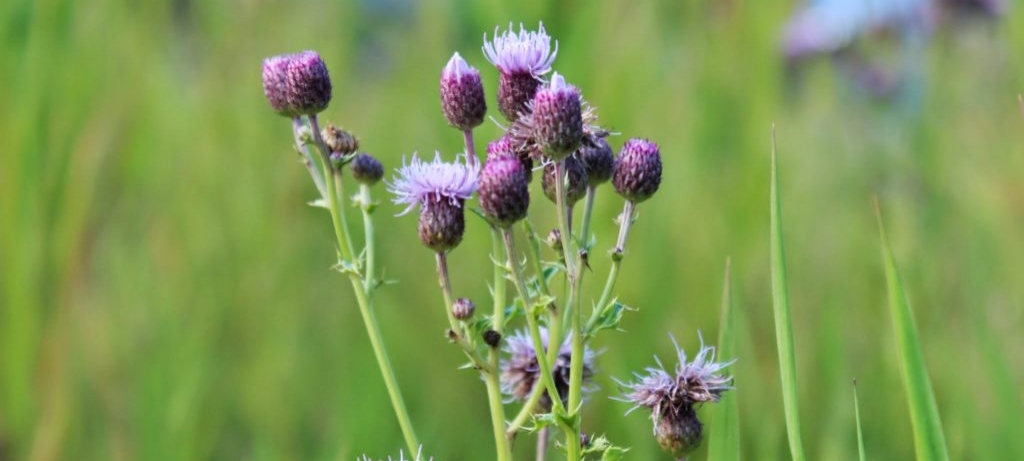
Young Canada thistle
Image credit: SSISC
Canada thistle, a terrestrial herbaceous perennial in the Asteraceae family, is an open-land invasive that prefers disturbed upland areas as well as wet areas with water fluctuations. Canada thistle can be found in clay to gravelly soils.
Note: Another key characteristic of Canada thistle is the fuzzy underside of the leaves.
For more information visit Midwest Invasive Species Information Network (MISIN).
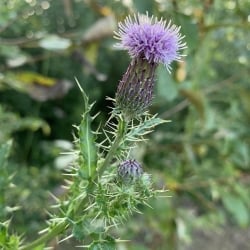
Flower and stem of Canada thistle with spines
Image credit: WSNW
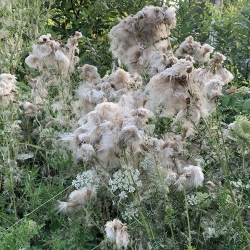
The fluffy fruiting body of Canada thistle
Image credit: WSNW
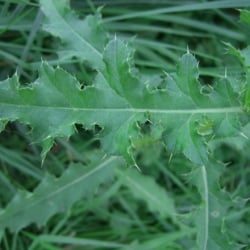
Spiny leaf of Canada thistle
Image credit: WSNW
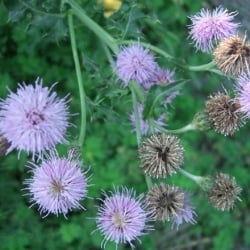
Canada thistle flowers
Image credit: WSNW
Canada thistle forms extremely extensive root systems that need to be repeatedly damaged to keep them from growing back. These root systems can spread very aggressively and can expand from 6 feet wide to 10 feet wide in one growing season.
Note: It is important to hand pull plants repeatedly to eventually exhaust the seed source and deplete populations. It is also important when disposing of clippings to not spread them anywhere else, as they will seed wherever they can.
Species such as native swamp thistle (Cirsium muticum), swamp milkweed (Asclepias incarnata), and joe-pye weeds (Eutrochium maculatum) are all great alternatives to Canada thistle. These species are tall, herbaceous, perennial flowers that are extremely similar to Canada thistle. All of these would be great choices for replanting areas where Canada thistle has been removed.